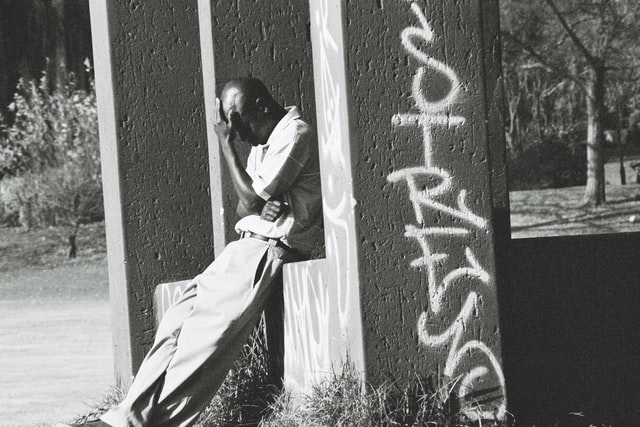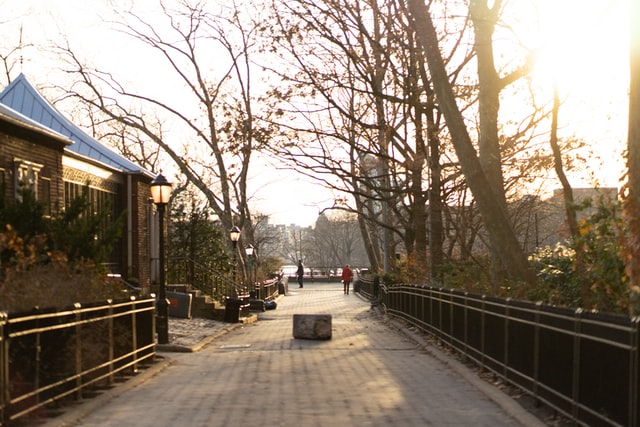It has been generally assumed, for many years, that “the free market isn’t good at providing affordable housing.” If the free market can’t satisfy that basic, universal human need, then we can’t afford to trust the free market, can we?
Oddly, the free market doesn’t seem to have a problem with providing other things we want to buy. There are sensible cars that working people can afford. You can go into Walmart and buy your kids a full set of school clothes for less than $100 (though you might pay a bit more if you’re concerned about abusing and killing textile workers). Do-it-yourselfers know that there’s healthy competition in the markets for lumber, nails, paint, wallboard and power tools. Why, there are even out-of-work carpenters eager to work for reasonable rates — it’s not the actual construction of the housing that’s unaffordable.
“It’s Not That Simple”
When water was the preeminent source of industrial power, towns grew up along the Appalachian fall line. In recent years, the globalization of various manufacturing industries has led to a decline in population — and real estate values — in many cities, especially in the Midwest.

The state I live in, Maine, has lost flagship industries in successive waves. In the 18th and 19th centuries, demand for Maine’s prodigious timber resources kept billions of board feet floating down the Penobscot river, and shipyards humming up and down the coast. (Today, one last shipyard, Bath Iron Works, struggles to keep its US Navy contracts.) Then, for many years, Maine was a leading producer of chickens. The cold winters helped to keep the large numbers of birds free of infection. But, when antibiotics were discovered to do the same thing, chicken farming quickly shifted southward, to avoid Maine’s high fuel costs. People — especially educated young people — moved away, and the state’s economy suffered. But, for those few who could afford a down payment, Maine homes were bargain-priced.
So, one thing we can say about “affordable housing” is that it tends to come along with economic decline. But, sometimes, in some communities, that process can have a silver lining. To return to the Maine example, old farms have been repurposed to make high-end wool products (sheep and alpacas like it there), or organic crops for a growing local-food market. Often, when land prices fall far enough, new, creative place-uses start becoming feasible.
Sometimes the process turns communities entirely around. In Maine, an example is the community of Belfast, a town of some 6,000. In the 1980s, Belfast was a gritty, working-class community that smelled like its two biggest employers: fish-canning and chicken-processing. When the chicken industry left the area, and the struggling sardine plant closed, the town faced hard times. Housing was cheap, all right — who wanted to live there? However, the town had a usable harbor, and some charming old architecture, and it willed itself into becoming an artistic community. Galleries and bistros sprouted like fungi. Tourism boomed. Rents and house prices soared.
Urban Blight & Flight
Throughout the 20th century, US cities declined, while suburban communities boomed. This was a national phenomenon. It preceded widespread globalization, and cannot be linked with industrial decline. And, it was in precisely these blight-afflicted cities where the “affordable housing problem” became most acute.
The cause of urban blight & flight had everything to do with the sad racial history of the United States. There were two great waves of rural-to-urban migration of African Americans. The first brought some two million blacks to Northern and Midwestern industrial cities, seeking to take advantage of the shortages of industrial workers brought about by the first World War. The second brought another five million or so after World War II, many of whom settled in cities in the West. Conditions in the agricultural South must have been pretty bad for so many people to pin their hopes on such an unlikely outcome. Once the Great Wars were over, industrial jobs were no longer so easy to get (after WWII, millions of women relinquished factory jobs to returning GIs). Many unions denied membership to African Americans. Furthermore, the process of redlining — denying credit within certain racially-defined areas, was very widespread. These factors, combined with an endemic level of racism in society, ensured that people of color stayed within well-defined neighborhoods.

Within those areas, unemployment was high, and it was essentially impossible for residents to establish businesses or buy homes. Rental housing was in short supply, and there was little incentive for landlords to pay attention to maintenance. This was a recipe for crime, and decline — and many of cities’ white, middle-class residents started to leave — a process that was accelerated by the establishment of the Interstate Highway System, and the booming automobile industry.
This process left behind impoverished, crime-ridden neighborhoods, patrolled by contemptuous and unreliable police. But you couldn’t say they weren’t affordable. At the very least, you could knock your way into the shelter of an abandoned building. A great many working people rented egregious housing, while paying for their own painting, re-glazing, and often heating, in Harlem, North Philadelphia, Watts, St. Louis, South Chicago and many other cities.
This is not to suggest that urban decay is entirely due to racism. It happens in places that lack the USA’s chronic racism, and has much to do with a worldwide shift of manufacturing to the global South and East. But, people often find it easier to handle large-scale social problems if they can identify a scapegoat. In the USA, the identification of Black areas with drugs and crime suited this impulse
At Least It’s Our Neighborhood…
There’s an inherent instability about this process, though. Blighted as these neighborhoods were, people had put down roots in them. They paid their taxes; city governments grudgingly provided them with infrastructure. Each had originally been part of a big city, a place where a great many people wanted to live. But, as land values fell, and more buildings were abandoned, eventually the place would become a real estate bargain. The slum may have lowered the value of the land immediately under it, but the slum as a whole was still centrally located.
A Doonesbury strip from the early 1980s showed a radio interview of the author of a book about making money in real estate. The author said that it was a good idea to distribute spray paint and crowbars to the local youth. “You mean,” asks the shocked interviewer, “you encourage them to vandalize their own homes?” The author replies, “Well, within reason. We ask them not to touch the copper plumbing.”
The history of a place like New York City is characterized by waves of blight and gentrification. Manhattan’s Upper East Side was scrubby farmland, then a rough-and-ready neighborhood of German and Irish immigrants, with a dirty, loud El train running right through it. Now it’s among the priciest real estate in the world.

Similarly, Harlem in the 19th century was a community of fancy country estates. African Americans from the South started arriving in great numbers in the first decade of the 20th century, along with subways to take them back and forth to work. “Urban renewal” policies threw up high-rise housing projects in the 1950s in an attempt to “clear the slums” and address the housing crisis, but the neighborhood’s poverty remained. Now, after all these years, Harlem is becoming gentrified, and there is resentment over losing the old community, rough as it was — as well as the skyrocketing housing costs. Even the South Bronx is starting to sport some pricey new condos.
The Blight & Flight Pattern Reverses
Where do people go, when they get gentrified out of the neighborhoods they’ve lived in for years? One would think that in the vastness of New York, they would move to the Outer Boroughs. Some do — but real estate prices in New York have become so extreme that even cheap Outer-Borough neighborhoods, like Williamsburg, Red Hook or Astoria have become unaffordable. Many have to leave the Big Apple entirely and head for the more affordable “inner-ring” suburban communities such as Jersey City, Yonkers or Nassau County.
This is becoming a nationwide pattern. People who can no longer afford to live in gentrified, former low-income neighborhoods are moving, in large numbers, into “inner-ring” suburbs. Poverty, racial tensions, and other social problems long associated with “the ghetto” are showing up in suburban communities. And housing in such places is becoming — that’s right: more affordable.
Must Affordability be Synonymous with Poverty?
Back in the mid 2000s, we seemed to be on a path that would make the American dream of owner-occupied housing come true for just about everybody. For a time, it seemed like anyone could secure a home mortgage. Banks were offering mortgages with no down payment, just a pay stub indicating the buyer could make the monthly payments. Just to make sure, Fannie Mae and Freddie Mac offered targeted mortgage programs for minorities. Price was no object, because everyone expected the value of the real estate, which served as collateral for the loans, to keep going up. Suddenly, all these new homeowners could borrow against their home equity to buy a new car or a washer & dryer. It was a magical wealth machine, fueled by historically low interest rates. What a neat solution to the problem of affordable housing! Alas, it was based on a transparent fallacy, and the process made a few people fantastically rich, while deeply hurting just about everyone else.
The dreamer awoke; we realized we couldn’t really create the American dream out of pixie dust. There are currently more empty, foreclosed houses than there are homeless people in the USA. Unfortunately, homeless people don’t have stable jobs or good credit ratings. Which agency is going to deal with the innumerable i-dottings of transferring title to four million empty houses? And are the banks going to give up these assets, just to be nice? Though it might make sense, in many ways, our current political system simply will not allow these empty homes to be given away to people who need them.
Cities are left with the realization that they have to create affordable housing the old-fashioned way: build it. There are, basically, two ways of doing this. They could spend municipal funds to build public housing (which is politically unthinkable today) or somehow give private developers an incentive to build it (which is, as things now stand, economically unfeasible).
Cities Try to Put Deals Together

Nevertheless, a number of cities are trying this sort of thing. In New York a developer is allowed to build 20% more units than zoning allows. By “allows,” I mean the square-foot figure that has been negotiated using transferable development rights, public-space considerations, etc.). This is the case if it agrees to create, or keep from being lost, that same number of affordable units (“affordable” being subject to various official definitions). Two things about this: first, it solves the mystery of how people are able to build thousand-foot towers in areas that are zoned for, like, twelve stories. Second, in terms of meeting the need for affordable housing, it’s an inherently losing proposition. At best, the program will only create 20% as many affordable units as new luxury ones. If the luxury towers succeed, they’ll add to the upward pull on housing prices, causing more affordable units to be done away with. If they fail, luxury housing will be oversupplied, and since new affordable units are based on the creation of new luxury units, it’s self defeating.
We have come full circle to the problem that we started with. Why is it that the market is able to provide working people with cars, cordless drills, blue jeans and smartphones — but not housing?
The difference is really pretty obvious; has the reader caught it? Here is a house. Let’s play real estate appraiser for a moment: is this house worth $50K? Or it is worth $1 million?
You hesitate. You seem to need more information. Wouldn’t it depend on interest rates, and the boom/bust cycle? I mean, heck, you might not be able to get $50K for it, if nobody can get financing. True enough — yet there is another, much more important consideration — something real estate people know very well, but public-policy people always seem to forget. It’s all well and good to figure out where things are in the business cycle — but to answer our question, the thing you really need to know about this house is: where is it? How many people want to live there? How close is it to lots of people to meet, greet and make deals with? How easy is it to get from there to places where all those people gather for business and pleasure? What public services are provided to people who live there, how good are they, and who pays for them? It’s the value of that location — where it is — that accounts for the 20-fold difference in price.
It’s also worth noting that although people struggle to afford housing throughout the economy, and, indeed, the great bulk of foreclosures in the subprime housing crisis were in suburban areas. Nevertheless, it’s in urban centers that we hear the hue and cry for “affordable housing.”
Fans of The Free Market are tempted to ask why urban centers need affordable housing. Aren’t cities supposed to be places that draw the best talents and most nimble operators? Urban taxpayers invest in public transportation systems; why can’t the workers just live outside the pricey (newly gentrified) central cities?
But that doesn’t work, because — as we have seen — areas within commuting distance aren’t affordable either! The “affordable housing problem” of today’s cities isn’t a matter of community spirit, or compassion for the poor commuters. “Affordable housing” becomes a problem when so few people can afford to live in a community that its ability to sustain a local economy starts becoming threatened.
Cities Are Not Filled Up
There ought to be plenty of affordable housing. If one examines any US city — by driving through, flying over, or scrolling through Google Maps — one will see a truly amazing amount of real estate that is either entirely vacant, or grossly underused. How many surface parking lots does Downtown Brooklyn need? This waste of infrastructure-rich urban land happens throughout the city, from the hyper-valuable core right out to the fringes, making the urban area sprawl out much farther than it would otherwise need to (and drastically increasing both pollution and travel times).

Why does so much valuable land go to waste in cities? Because those who own the land are allowed to profit from community-created land value even though they don’t use the land. The vast majority of new urban developments are not undertaken by the land’s longtime owners. Developers acquire the land — often along with obsolete buildings they then pay to demolish — by paying big prices to owners who have not contributed one penny to the local economy. This is the major cause of urban blight and sprawl, and unnaturally high — and volatile — housing prices.
It’s vital to separate the owners of land from the builders and operators of buildings. They may or may not be the same person — but economically their function is entirely different. In our economy, the value of land is not enjoyed by the people who create it. If that seems a bizarre statement, it’s only because we’re so accustomed to the utter conventionality of it. The value of locations is enjoyed by real estate owners, and banks (who hold equity in the property until the mortgage is paid off, and earn interest on the money loaned to buy it). Location value is created by the community, yet collected by private investors. In fact, it is collected by private investors whether they build housing or not. That is why housing is unlike any other commodity — and that is why the problem of “affordable housing” seems so unsolvable.



